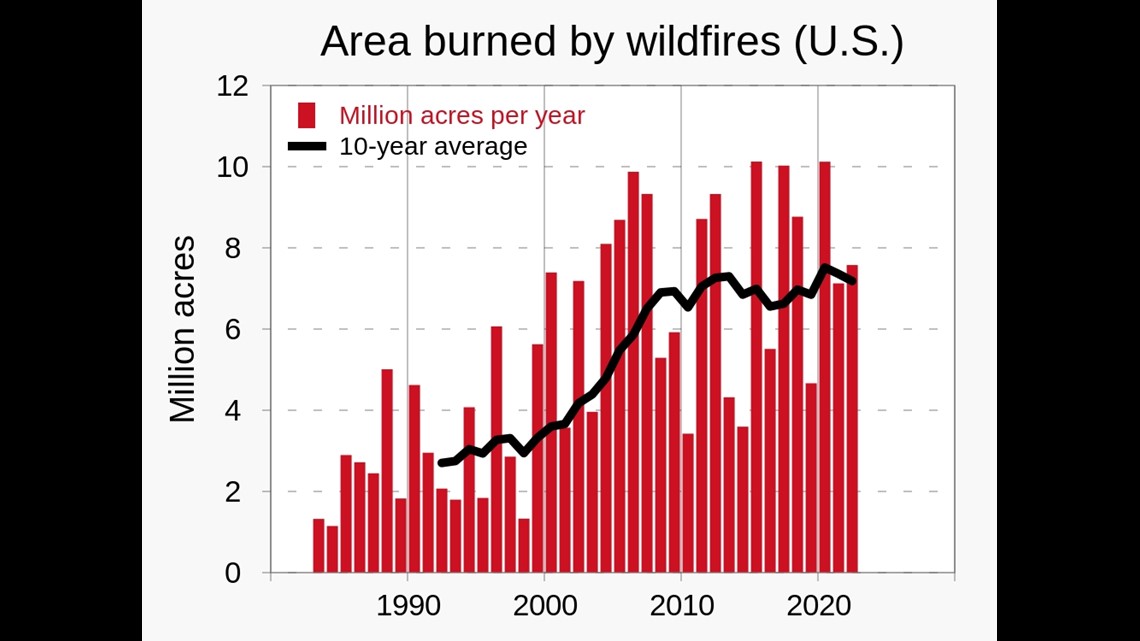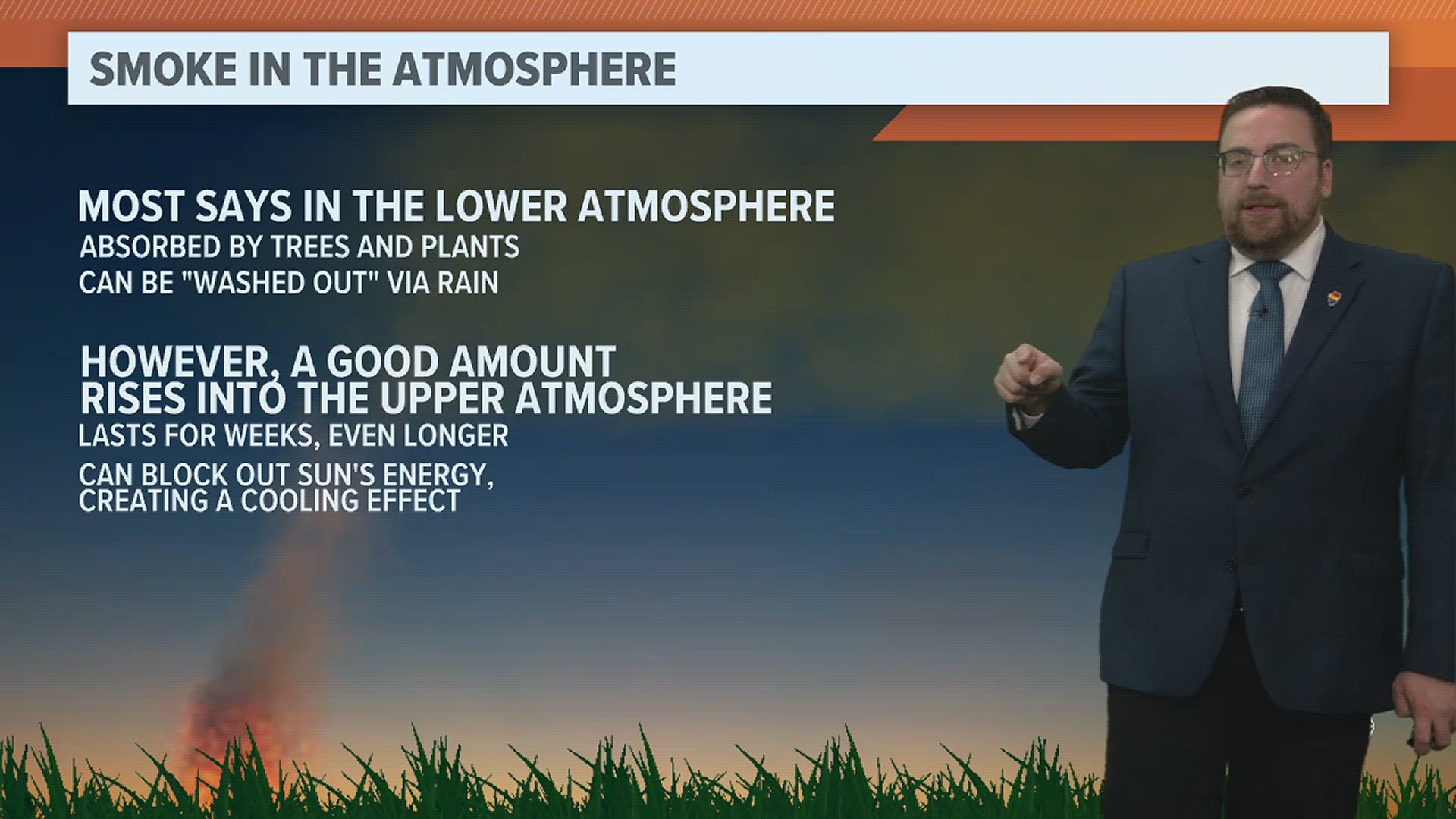MOLINE, Ill. — Wildfires continue to rage throughout much of Canada this summer due in part to abnormally warm temperatures, dry vegetation, and rounds of thunderstorms containing a large amount of lightning. These fires have sent copious amounts of smoke into the air, reducing air quality, even in the United States, and impacting travel.
The question remains, what happens to all of this smoke once it enters the atmosphere: Does it dissipate? Get rained out? Let's dig in!
What makes up wildfire smoke
The dirty appearance of the air is made up of brown carbon particles released from burning trees and other vegetation. There is also black carbon, seen in dark smoke plumes from burning fossil or other fuels at higher temperatures. Brown carbon is produced by incomplete combustion from grasses, wood and other organic material that smolders.
Traveling higher and higher
Researchers have found surprising levels of brown carbon in samples taken from the upper troposphere, about 7 miles above Earth's surface, but found much less in the way of black carbon.
As these carbon particles make their way higher up into the atmosphere, the climate becomes more sensitive to them. Researchers also found that brown carbon is more likely than black carbon to travel through the air to higher levels of the atmosphere.


How does it get here? Think about the pattern during the summer months. You have towering cumulonimbus clouds from thunderstorms with a lot of upward movement. The smoke particles will attach themselves to those towering clouds, hitching a ride further up into the atmosphere. Here, they encounter slower wind speeds, reduced precipitation and limited mixing, creating conditions that allow the smoke to linger for longer periods of time.
The long-term impacts of wildfire smoke
“People have always assumed that when you emit this brown carbon, over time it goes away,” said Athanasios Nenes, a professor in Georgia Tech’s School of Earth & Atmospheric Sciences and the School of Chemical & Biomolecular Engineering.
“The surprise here is that the brown carbon gets promoted when you go through clouds, compared to black carbon,” Nenes said. “This suggests that there may be in-cloud production of brown carbon we were not aware of before.”
Persistent smoke at these higher altitudes can interact with sunlight and other atmospheric components, leading to the eventual formation of additional pollutants such as ozone. This can further impact our climate, both increasing and decreasing temperatures.
How it impacts our food
According to the USDA, wildfire smoke can absolutely alter the taste of food since it carries various compounds and particles with it in the air that can be easily absorbed by plants, crops, and even livestock.
These same smoke particles can even settle on the surface of fruits, vegetables, and other crops leaving a residue that alters that flavor. The intensity of the flavor change in the end will depend on the amount of exposure and of course, how long.
Have a question that you would like me to answer for an upcoming Ask Andrew segment? Submit it, here.

